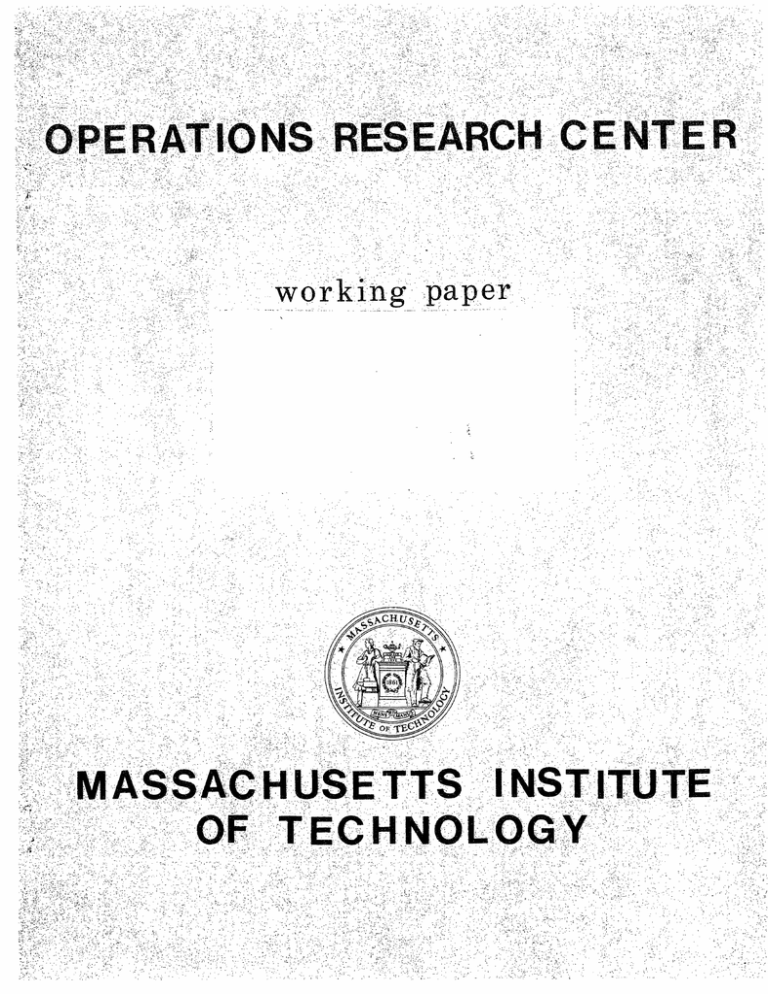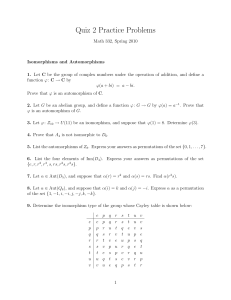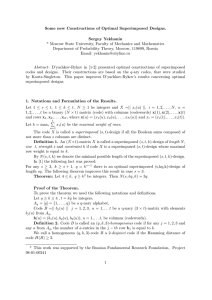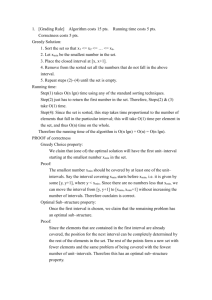- ..--.. --.... .
advertisement

1,1--, -- ... -I
I--
.
-.,-.
1...I.-.,--1.
--....
-
Z' ::
..--..
-1I.
.,.. - ,.. ..,-.
.. I ,-,-I
.--------,,.
.1I-.
..-,I1-..
...
I-.--I.-.,I-I-..
.:
, .1 11...I---.I-,.
II.-:--,,-..II-.` .I.,
,III.I., ,,-,
L'..-.:-.,..
eII.-I.I-1--!
,-I`--,I,,;,%.,.,-;
,,-- ,-,-"
:
,
,, ,-...--.31
..-,;-,-,--,I-,,I
-.-I-..--.
-,,------,:
:- : ".I"I-7:.I
,,1.--p-,..17
-,-.--':II:
,2-,,
-".:j
"-,..
I ,::-_-,
,,:
---...--,-I .-... I..I--,.,-..I--,-.,
-...
..",",Z
,-,,-I,
-,,-;:,--,..,",
;,
" -,
: . ;,:-.-...
..-,,'
II,
,I-.,..
,--,.1..-"-:.-t
:1--.-----I
-. , ,, -; :
,
,--.
",----.,.,.:---11.-..-I.,t..
I
-,-,.- ---,:.,-.'- : ,,,
,..,,,.
-,,-,.
.,,.:I,..
, O.,-,:--..::--I
,-I..
..-:I"
...--,
I-r.,
---; ,,,
, .I-""-,--.
I...I
I-'II."
:..-.
:
ei,
-.
.-;-..,,-",-I
-,,-,
..
:
, .1I1
,-.,lI...
.;,,.--7--.:,,,.:,:
,:---.-.-,-,
.
--:--.',
-,
.:,
,
.-,
!"s
a
Ir
--1
.I---1.,
:",-,,--,,-I--,-.,.-.
:,I.-..1
-,,,%..
,,-,-,-.--.,,,,--.,
-.....,.--..
"",-I.
..
",,
-,,
-X-Owo
.-,.,.--,
I..I---.,,.,,.-I
..
:--,-,-.:,
,-,-,.
%:;,
-,,,
.,-,:-,
-I-.Ih,
'--.
-111
I'---I--.:
,-11
,..-.,
:--I
.-I
r.---L
-,7'.".
..11',
:-:-- --.
-,,-----"----'
-::..-.-I-1..III
-.:
-`,i,
,----:.:'-`,-.
. 11
".
-,
-: ;z
.-.
.---,-i-I.:,. , -"'"-I ,-,:
-,I-----,--.--,,.;,,,
.
-i..--,..,,,,-"
"T,
-,..I
,-..::,,.
.,
'.,, ;;.
,..".I.- -, : ,:..:.
!"
"
e-..-1,
...
,'..,----.
--,-,-.-.
.,i.;," ,I"-.II!!" :1 ....
-,:- .,-,,-.....
,,::
--,-,,.-,.,-. ..III ",,I,:"-.:-:...II.-,,,
I.,,-.I
- --'..',,
---.
:r.-..-.I.:,,:7P
. ",'t.'.
:I.
,., ,- -O-LI,,,--,-,.:,--' ., ,
,-.--;-:.,..
--,.: .,_'.--.
-,-:"..,
,-. ,',---,-.,,...I.-"
i
,,- -,,,..
-.
,, :I--,:"
,I I,,..
.:--,-I--I'.
-- ,,,..,,.,.,
-,-,---:
1.-.
--, -:-II-,,-.I---.,-.
-I:- -.j-,"-.,- .-- 1,"I;,;,:-:-.,--.,.,.I11
..:,- ,,.,,
-,
,.--.-,--,--,,.
..,-.-I..::_
:,-,,4,.
-,..,--I
,-,.,:,.:,
,; -",.- ,,,
j-. ,-I,',,!,,'.,---".-;,,,-!
,-,-Z
- I,1.
1:',,1,,-.,'--.-,,... ,',-- z:::I-rl-,,
-,:,I-,--.,,-- , ..
..,.'.;I:,7.-1...
.-z,...,-la
.:-,
,.I-,I;.
."
-,,.--,..Z,.:
,,-P-:.It,.I-1..-II..,
,,
".II
d
I
--..,
:
,
--,,II-".,
I-.,,,,,,,
.;I
.!
:,
,
,,,---,
.I-I,.-1,,---.;".-,,,.,
-,,,- .-,-11.. ,-.-.,,-.-P I-,:,-:,.--I, ".,-.
-,--;qII-I.,.%II,
.,-Z.,.-:,---..I---_
-,-,-..t
-1 -I:- ,1I,.
-,- ":.--- --- `
, -,
: I-:.--"-.:x"..,-:,
":-,, -I-_:.I!--1---,,
: :,.,,3-1,,I--;--.I
--,.
c:-. '. 7PqI--,I--, ,j --,-,
- -,,I--.,.,,.--:..
-,
-.--:"-,
,,Z..,.--,:
.I
,,
f .,-.,,--.i.,.,-,,
-.
".- ,,, ,,,,- .: .I..,-,-X,,,.;..
.1. --------':
-.;,,,_,-,
I-.-I,-.-I.-., -,1
,-:."-,.,-,-..,-,
...,"
.-..
-I,,
...- ,7-,
.7.:
--,
if
,- ..
,
...%--.
--.
,,,
.1,.
.:
-,
-_,"",---,
-,, ': I,,I,
I-,A.I-.::,
I--,--.-I..--:
.I
:t ;;, z,,--IIp-..".---II
,7.
,o-,I.I.
-I,
:1
,-:;,.---,,-"F--..
,--,
;-,--,
,.:...-,,- :,I,.,..,---..-.II,, -,,-.,-z: ;,, ,r-. -",,, --.
; i,,:-.,-,.,4.,
1-4
,-L,.-.,
:-",",---,,.....,1:I-:1.-..I,
-,%
,,.:
,:,.
.-,,,,-,
-I.
.1..II,- ,,,,,-III..-jr:-..I.IL.I-I.., ,I-I
',:,
,-,
.1r-.---.,,,,I
.-"-,,",-,.
,J;
-I-.
--,-- '.
--,:..---..--,-;.
--.
--,"7.-0
-,-,--I-':
,,.-"-,, .,
- -- I-.I.1..4,-.,
.
-,I.,-b-.,.,:.-,
.,.;.L,,,,.-.
-.-,
,:-:-"!
II.-;,- ,,
,--,-.-I1
,L.-:,:,-,,-,
41':--,,
.;_-1.,..."..
., ...
,-1-.,.,,-,:7. -.
,----.I-:-.,,,-,-.Iq
.. It ..; ,. ,:.
:,-,."I-I-,-,--,
,,, 11.w
"-,.
--,.--.::, ,
-, -, ,,
""-,-,,-.,.-,.-.--,:.",.I
,-- --,-,' !--. '-.,
. ",.-..
-;
,.:--...,,I
,,
--..1,...-;r,,:.
.-- ,.j.-.
,,--.
:.4,.:I
:.;)--,-----,-----I..-': :._,,..,,,.,,,,',:-!
.: ,;F.
,. ,-,,
Ik-1. ,,
,:-,
--.---,,--,--1 ..,I.--;-T-,I--.-,
:.-,.:I-.
-,.P,-Z
":,,,--,..,-'.
--:,
,
-,,,
:,.
,-:-i
I-Y,-,i-,;,;
,----I
l---,l,,--'--I.,.,,
.'
--t.-,,-I-.,41-.-:,
II
.,-,L.,
,,I--.,
-I-.,- I:.
---,.4,
,,--,,---:, ,I-,,-,
-. o------.,.-.------..-.
:7
..-...,I..I,.
-,
.,"
,
..,,.
..
11.:I
.I-;,,.:..I"---,,,.iZ:,,
-,
-I.,
-t
.
.I,--,,I.-,,.,,.
-Z!k
.,
,,
2
I
I,!,
-,- --,,,.-..,
-,-,
:-,., ---,,--::,,I.." ,,--I-:!-,.,
-.
I--.
I-.Ii
:,,--,: .-.";
- --:.f-.;,-,:,.
".I,,-.,,.1 I.1.-.--,I-,,.X-:,:,
.-7-..:::- ..
,.."L,
,O!I,
't;'-,
-I.;,",,;!,-I--::4,II,-..Iil
.....
--- -- ,--,:-,.- "-, : ,, J. .,..':, W., ,4,- ,r , ,-.,,:,-:'-, - 1-, -, -: I-.,"`-..-I-I- :, ..
,,,II,--,..,I:-;!,,,-,,
1: _
..,.,
:,-.--.., ,,,".
,,, --,-,,
,-,I--,.
-: .-,.-1.,
..,,----7'.-,-I-,%
I,1- -,.4, -.-.
...-.- ,.,.,,
,, ":,,-,
-.
,,::. ,,-,,.I,,,
-Z-' :" x-i
,i..,
.,-,,
,... .-,
_-,-- --.,I'.
I.,-.,,., ,.4,,
," --, -,-'.
,!,.'.
"..I.:t;
,:,.,-,
I,,-I,,I-_;:--I
,--,':.:-,,
,
.,-.I,
-,---, ,,-.II--,,,.
I.-,.- ;. -. il ,
-,,----.-,.,.,
-,--,-,,.
,,.,I
,, -,--.,.,,, III
,--.:.II,.-.
--I-II
-,.,
.,,,
.: ; .1 -i7.,:-,
.. ;,,, . . I , I
-,..-,--;,
, --.-,,:II.1
.-`,
,.
-;- ,.
.,_I I':,-';,
- ,-, ,
--1 _-,-i:III.I.
-I.:
, .,".,
.,
,.
,.-:
,
:
,-,.----'--I:i-I,,--.1-I.,.,.,.
...
-1I
-:---,-.11.e
,-.I-I.II--:"1 - ,,
-,,,, ,.
I-,----,
,
: ,:- , .-l.,-:,: ,..,,,.,b.
I,,.,Ic
-"..,-,:-,,I,-,L,--,-,
,
-.
:., ,-..
i,
----...
,.,-"
,.'.Ij.I..--.
-;-.-,
-,.
"....1
-'.-:-'.,,,,,
I7---.
,I,
-,1
,
,.
-,
,.:
:,
'-,-.,
-,-,
-,--,
"
,
.-..1
,,I,-11
1
::I...I:,,o,.--.,,,,,
.,I.,
I
-,,':.IT,-..,.II.-,,.
I
,
I..
'.--_,;---I1:,.I.:- -L--,,
.:;,--.;
I-:.I,
,,--..1
- .%,;,:-,
I-1.I..-II
.--'.-,
I
,,
,,
:,---,-,-,-,,
Ask.,
--.
:
:,
,,
.-,
,..I,
,,-,".,
i,. -4
--,.,
, ",--,,.,
-1'; :,I ,,I
I-1..-.'..:--',
- .-,--,
--.- .,-Z,- -.--- -_-.
-,
,." ?- "
-,,-. , --.
"
,.-I-,II-.
;,Y ",
-- ,...:-.,
I,:t ,,-Z
,..,.'.-,-. --', - I., :,--. I.,- ;:--".
-,-.,-,I,,,.II-,I,,,,.
,,-:".I
I..
,I... ...--.:.
. I.I-.
,-.,--.,,, ...-,I-,- .; -,,
,,a
-I.,C"_'..
1.%-... ,',.,a.''. -,
-. .I1, -.
:
,--,
7:
'.
ml&,t,
,,V
,.
-I
"
...I
--1,
,
--,-.,-:1I
-.-,
1".
7 --.
,
jm:--,-,
rc7:--- - ,'' ---I..
-MI..
---.
5:
,I
HZ., ILI
-L
".'-I. ..I.I-,-,;
.,-,I,,
,.,,,,'-,`-`,IP,,,7
.7 -.:.F,
.-I.II
.:.--I
:-II
..-IIII:
-I,. ,,-6
%-ildp 4-.III.I..I
,,,,, ,--,,%- Ii"I
-m;I. ... I.:I
-I
I-,
,,:I----,:.
.IX----,
-,,,:2..,I7
,,L-___-I
1. - "
ffl I'MI-.a%I,-.---,..,I
I- -7,-I
.,
:.-,LI-..., . .I-',...I.
-.--..,I I,-,:--,,I
,",.I.: .._,_.I.IZ ,':.-,
-II,-It.-.
,
,.;:,-,-,-..-I-7i-1
:: ',,
" -4
.M-.-,,.
-- -,
--.
-.
. ::,.I,..:
..---,,",
11I-i
,-,
---,,-.II.,,
- -,,--.,-;,;-.
,,.
..m7 --:1
", --- . .,-,,:
.,,-II4,. :.
.;I,.'.L
I .7,,.I
1:--:-,,,--,IT:,-z-,:..,
-,-,,,I- li.
..
,- ---I,'-,,"4--.
---,.I-..
.,-I.I-I.:I-IZ
,. ,-I.
,:.: .,
t,,-.-..-I ,,--,.,:-.-I:-ZL;
, 'w,..L,
..
-,I -,-- , ':..,.I
-rI.-I,..-.iI
I,-.
II",II-'-,,------X.
' I..,- '.---11-.,Z,
.L
''
.-,-f
.-4,.
...
,'
,,
..
IO.I,
,.-,.--:;,
-::
I,,.
,,,
-,.LI,
-I..,,
-.-,-,I
-1
..I-,
-,I --,-,
:"--I
.I-I-----,-,,,-,---,--,,
-.
i ,-.-I.I1,7,II-..,,....I.---I.-,
I-..-..,,'!,II.1-;---I..--I.,,:",I,
4-:I
-..-I.,
J.
".,
-.
",-..
I
,.IN,..,..,-;.,-L!r":,,..,.,.
,.
.,.,,
j.I- : :-,-_ .- -.iI.-1,:.,.
-. T,-.:.,-,
,-,iIIL.,.,-. ....,--...II
.:I':
I--i-,-"-,.4
,-,--I,.!III---.:.:.-I,-I.,
,-:---7,
7.-7,--I.,..,,-,I-..,-.I---I-,
-,-- -.I.j-..:,I.-.-.
---. .:.:I...,:,,I.I.....Z-:-,:'
,-.-.-.
,II..,:,
4 ,
..-.,I---II,.1,---r,-.,...,.
II,- ....
,.
,--.
-.I.:-1,:,
.....
I--1
,--I.,:.
,,:w.I'.,,:-I.
..II
,i ,
1I---:,...
:.-,,II.-mI,.,,,I-I
: ..:-.,,,-:,-....
---.
,-.-Ii.
,Z:-:..-.-II-,
,..
..
b,,.,,Io-,,.-.--:-,
.!
....
,,--..-,.,-,--.,,
L.-1-,-,;:
,:.I.".;-I,-'.
,-:1..-,..,
..... .:
I-...
.. .1-I;.ZI..
I,.,....,., , --.
,,,,I;I,,
- :,.,,,.. ;-,.:..,,-.,-,Z
-I.4,:.-,.,--..I,.%,..-.-.----.IIII-.
. .----I-,::I"
-,-,..-I:
-- j..-II.I,-,...--...-.I-'. . .-'.-II
,.,I.I
.. .I.I-,:-1-,-I--1--.
':
-: . i,-..:,7....--,.21,,,:-,
- 7-,., : f--;.I
.4,,.
,--.
--I1.M,-,:--.-,--:- :.I.1.I:.-.-.II
- -:.f-,7,v --,:,:Z-1i,I". --.m,:
--,-:.I....,,.:-:1.--.-,.,1..::.I-IIII
,'-' .:
, .,
:.-.,.I
-.:,I,--,.,-.-.--,
--,,,.-,
,
i.-1.-i,
,..-I
.
.. :.,-:,.
-I-.,,,:--,-_;
"I:. ,.I,.--,:
-,,t--,::::
,7::.,
---:;-f,.--.:.:
-I:
.',--,
': ,"...,
-: -::--,;-,,..,..I.
-.
I.
I.-,
-: ;'. ,,.-.
-..
,-%
...II-I--."r : -_--,
"-:.,--.dr,
..,,.-..---.,-,.-,-,,
.,,"-.::t11,,,;,..,l 1-I=.
II.11I.%;I-.--,
-,:,.1-L'..
,--: .,,-,,-.:.
.,.
,II--'-,,I.
.- ...
..
. ,---,
-,-I,
,, , : -,:.,---".1q .,..'':,',LI'-_j.I.-.:
,--,,,
,: --.1,
.I.;I-p
--.. -, -.,L -II.,,---,":
,;i-"I- - ;,.,--..
I -..
.,."
,,
II,--,:-,-.,.-.-I.--,,-..
.;-,".-.-,M-..:,.:-,.-..%.
;..
>"-".I
--.,1
:
,,";-,.-,.-I
:1
,-I-I-I.
;:I
.1-.I
,I11
i.,
,I.
..
,
I.,
;_,----.I,",
.-.,.-, -- ;-.- :,.:1..,:,-1_I-.----I.
-.,",
I.
: .,-.r : .- II.--L.1--.II..--.
tI.
--.
. .-,.
::.,
,,:pim,%
1.I..-Z-_:I1.,,1,;:
,..I--:
-- ,
1.
.,
-4.
,-,-.-...
1-.I:-" ,I,-,.--..-.;
---1,I--I--II.I-,
: -,,.,--_;L,_-:-,.,::,.
.,;-,I-1
-,-,
:-,--.- ,.-:.
,!
,I"I`z -,:Z
-,
,,,-2' , :-..-,-,-,--,:-.:..-p.
.
----.-I, -,.
-.
-,-I.-I.,,,-:
,__-.,-,-,-.-.
,..J.,
-....1I-, ,-'',,
-I
,-:;.....--.,--.I,.-.
.I-14.,,:,!.L-,,.::
.. '.,,-.
":-,71--.. Z
,.Z
,; ..,
-I I..:
"-,-,,-,,
.;----,.I-,-.-:
,
pI-,O.,7
III-I.,;I-.
,"
1-,-,,.;
, . , .II1..:.
- .,,,-,-- ;--,,:,;,,,
tI.11
.,.- :j.,.--:,_.,.
,--.,-,,..I.:IL..-.--,I,,-:.:,:,,,-I:..:---..-_
'
L.'..---.11."--,.,,:".-,:.,I-..I.
,
1,".
.,..-1.I--I-..,..''.-,.
I..-.I-1.I.
mL:
I-,
I,
.,
'i,-;:i"',.-.,O.,,.If.,h
-11....
.-I
1,..i
.
---:1 ,I--.I.I.II.-I--I,-L-;'.
-,'. -;,,,:,:,I,:,::
,- -. :,,".
.I -7-,
I.
,,,.
Z. ,'
-t..Ii...::,
ItI-...-..,.I
.,..-.:,
,I
,.,:.III...I
.:7
,"-.-.
.-,-,.
1:,,t-,,:I
.,,-..I,
,.It
..,,-,,---.L.-I
.i-m-I-,
-_---,,..-1L,.--.
-,-"--.-,,,
;-;Z,--,-,
--.
,
..
-.-
,:.,
I.;711.qw 1:
-In
-A-C,: .:,,,
:,.L
I,.::,,.--
--.I-..II
:-,--;--I
0.
OFaTEHNOGY
I.
COMPLEMENTARY BASES OF A MATROID
by
T. L. Magnanti
OR 013-73
January,
1973
Work Performed Under
Contract No. DAHC04-70-C-0058
U. S. Army Research Office (Durham)
Dept. of the Army Project No. P-9239-M
MIT DSR 72650
Operations Research Center
MASSACHUSETTS INSTITUTE OF TECHNOLOGY
Cambridge, Massachusetts 02139
Reproduction in whole or in part is permitted for
any purpose of the United States Government
1.
ABS TRACT
Let el, el, e,
1' 1J 2
Suppose that {ele
e'..., e , e' be the elements of matroid M.
2'
n
n
2 ,...,en}
is a base of M and that every circuit of M
contains at least m+l elements.
We prove that there exist at least 2m
bases, called complementary bases, of M with the property that only one
of each complementary pair ej,e' is contained in any base.
We also prove an analogous result for the case where E is partitioned
into E1,E2...,E
partition E..
J
and the initial base contains
IEjl
- 1 elements from
2.
I.
Introduction
n,e' be the elements of matroid M.
e
Let el,el,e ,e2,...
2
force of n men wishes to patrol a base of the matroid.
policeman k is only allowed to patrol either of ek or e
{el,e 2 ,...,e
base.
n}
A police
Suppose that
and that
is a base of the matroid, called a patrolable (complementary)
How many patrolable bases are there?
In [2], Dantzig considered graphic matroids.
He showed that if there
is one patrolable spanning tree of a graph G (with no loops or parallel edges),
then there necessarily must be a second.
Later Adler [1] strengthened this
result by showing that in this case there must necessarily be at least four.
Here we show that these results extend to general matroids and that
the number of complementary bases depends upon the circuit structure of
the matroid.
If every circuit of M contains more than m elements, we show
that there are at least
2m
complementary bases.
We also generalize this
result to the case when policeman k can patrol dk of the (dk+l) elements
of the matroid assigned to him.
Our proofs are based on Lawler's matroid intersection algorithm [4] and
provide an algorithm for determining alternate complementary bases.
proofs could just as well have been based upon Theorem 2c of [3].
These
In fact,
Dantzig's paper was motivated by a discussion held with Fulkerson concerning
the results in [3].
Dantzig and Adler's results were based upon complemen-
tary pivot theory of mathematical programming.
Consequently, our results
strengthen the well known link (via the assignment problem of network theory,
for example) between matroid algorithms and standard results in mathematical
programming.
3.
II.
Preliminaries
If S
S-e.
E and eE, we denote SU{e} and S-{e} by respectively S+e and
Also
ISI denotes the cardinality of S.
section algorithm,
Beside the matroid inter-
we only require very basic properties of matroids,
so for convenience we review them here.
For our purposes, we define a matroid M to be a finite set E together
with a non-empty family t
(i)
(ii)
I c I1 E
of subsets of E satisfying
implies I E J
Given A c E all maximal sets (with respect to inclusion) of
9
that are contained in A have the same cardinality.
Maximal sets in 3 are called bases of M.
Subsets of E not contained in
are called dependent sets and minimal dependent sets are referred to as
circuits.
These definitions easily imply:
(S) = {ICS : I E
, then (S,(S)) is a matroid.
n
Suppose that E = U Ei where the sets E i are pairwise disjoint,
(Ml)
If S
(M2)
E and
and that d = (dt,...,dn) is a vector with non-negative integer
components.
Then with g = {I C E : IInEiJ
matroid called a d-partition matroid.
<
di}, (E,d) is a
When each d
= 1, we call
(E,J) a unitary partition matroid.
(M3)
If I is a base of M and e
I, then I + e contains a unique circuit.
Let M1 = (E,J1) and M 2 = (E,,2 ) be two matroids over the same ground
set E.
A maximum cardinality set in J 1/A2 may be found by,using the following
procedure.
4.
Matroid Intersection Algoritbn
4]:
Assume E = {el,...,e }. Let
L:E-{O,1,...,n+l} be a labelling function to be defined during the
algorithm and let S be a set of "scanned elements."
We call an
element e of E labelled if L(e)c{O,...,n} and scanned if eS.
Initially, L(ej) = n+l for all e
is given (possibly I =
and S=O.
Assume that a set I
For lj<n and eI,
(b)
If all labelled elements have been scanned, terminate.
(c)
2
).
(a)
optimal.
1nI
if I+e
l, set L(ej)
= 0.
I is
Otherwise go to (c).
Let ej be labelled and unscanned.
Change S to S+ej.
If e
I,
set L(e) = j for each unlabelled eE-I such that I-ej+ec l;
then go to (b).
with C
(b).
(d)
If eI,
then if there is a circuit C of M 2
I+e., set L(e) = j for each unlabelled eC and go to
If no such C exists, go to (d).
(Augment):
Define ej ,...,em = e
k=l,...,m-l and L(j)
Reinitiate L(ej)
= O.
by jk
L(ejk+l)
Replace I with I+e
for
-e
+...-e
+e.
2
m-1 ·
= n+l for all ej, S=O, and return to (a).
III. Complementary Bases of a Matroid
Suppose that E =
el ee ,e,..,ee,
2
that
matroid and that I = {ele2 ...,e } is a base of M 1 .
=
E
Note that I contains
only one element from each of the complementary pairs ej,e.
such a base a complementary base of M1.
Defining
9
2
is a
We will call
= {I-E: In{ej,eJ}I
j=l,...,n}, M2 = (E,J9
2) is a unitary partition matroid and complementary
bases of M1 coincide with maximum cardinality sets in
1j
2.
<
1,
5.
Let NM
denote the number of complementary bases of M 1 and as n
varies let~ denote the collection of matroids M1 with the above properties.
In this section we prove certain lower bounds on NM1.
depend heavily upon the circuit structure of M.
N(m) = min {NM:M~
Theorem 1:
Proof:
N(1)
The results
Accordingly, we define
and every circuit of M contains > m elements}.
2.
We consider an arbitrary ME,9
1)
contained in
with the
property that every circuit of M 1 has > 2 elements and show that NM
Let 42 be defined as above.
2.
Starting with I = {el,...,e } suppose that we
remove el from the system producing the submatroids (E,J1(E)) and (E, 2(E))
where E = E-el.
Apply the matroid intersection algorithm to the set I-e1
contained in , 1(E) n 4 2(E), beginning by labelling all eE such that
I - e
+ e 41 (E).
Note that we reach step (d) of the algorithm and produce
a new complementary basis of M 1 if and only if e' is labelled.
Thus, assume
e' is not labelled and let L 1 be the set of labelled elements.
1
1
Repeat,
dropping e2 ,e3 ,...,en in turn instead of e
labelled elements L 2 ,...,L
.
viding the result.
Suppose not.
If eL
from E producing the sets of
for any j, step (d) is applied pro-
We show that it must be true that eL.
for some j.
Then every labelled element in the n applications of the
matroid intersection algorithm above will be scanned.
But then, the nature
of the optimal matroid intersection algorithm (i.e., an unlabelled element is
labelled based only upon the element being scanned) implies that if ejELi,
then Lj.
Li.
Also, since I is a base of M 1 and no circuits have length 1,
I+e! contains a circuit C of M 1 with some e
states that I-ei+ejel, thus eL
i
.
C.
Property M3 of matroids
Start with eL2, say.
When e
is
6.
scanned e
is labelled thus, L
L =L so elL, a contradiction.
1 2
e L1 ,
that eL2
ef'
k
L
J
3.
L
ecL.
ome j#2.
1,
then
Thus, assume by relabelling if necessary
In general, if eLj+l, j=l,...,k, L 1
for j<k as otherwise eL..
3J
e' must be contained in some Lj,
n
If eL
L
...
But, once we arrive at L
1
giving a contradiction.
Lk
L
then
L
.
2
LC
n
Therefore, the
hypothesis that eL.
for some j was invalid.
i
O
Lemma:
Suppose that every circuit in M 1 has > m elements.
given any m-l elements, say el,...,em ,
1
there is a complementary base I'
Proof:
a base.
Let j£{m,...,n}.
Then
of the base I = {el, ...,en},
I of M 1 with eEI', j=l,...,m-l.
I+e! contains a circuit C of M 1 since I is
Our hypothesis implies that this circuit contains at least m
elements of I.
e
is consequently labelled in the algorithm if we drop
3
any of these m elements from the system.
previous proof, eL
result.
But, eL.
Thus, using the notation of the
for some i{m,...,n}.
If eLj, we augment and have the
for all j{m,...,n} leads to a contradiction by the
argument used in the previous proof.
Theorem 2:
Proof:
N(m) > 2
Suppose that every circuit of the matroid M 1 has > m elements.
We prove a slightly stronger result than the theorem's assertion:
exists a rooted directed tree T
there
whose edges are elements of E and which
has the following properties.
(i) A complementary pair of elements of E originate from every
node of T
m
(ii)
Every maximal (with respect to inclusion) directed path originating
from the root of T consists of m elements of E and these elements
m
7.
are contained in a complement
fly
ase of M1.
(Note that we have
not excluded an element of E from appearing in Tm more than once.)
For example, for m=2 we have the picture
e.
Note that the 2m complementary bases corresponding to the directed paths of
(ii) must be distinct, since in tracing back to the root from the endpoints
of T
any two paths must meet for the first time at some node.
The arcs
following this node are complementary so the bases are distinct.
Thus the
stronger result proves the theorem.
Theorem 1 shows that N(1)
-
2.
Since there are two distinct
complementary bases, one contains some e.
e
.
Thus, letting e
and e
and the other its complement
be two arcs originating from the root,
the stronger result holds for m=l.
By induction the stronger result holds for m-l, giving the tree T
Given any path of Tm_
1 with elements S = {ele
contained in a complementary base I of M1.
2
... em_l}, say, S is
By the previous lemma, S is also
contained in at least one other complementary base I' of M 1.
there is an ej. I, e' I'.
im
' m
Extend T
1
1
by adding e
m
and e
m
Since II',
to the endpoint
8.
of Tm_ 1 incident to e_l
we extend it to T
Doing this foi all 2
maximal paths of Tl
and complete the proof.
The bound given in Theorem 2 is the best possible for let E = {el,...
em,e{,...,e'} and let
consist of all subsets of E with m or fewer elements.
Then every m element set of E
with
pair is a complementary base.
Thus, in M1 = (E,J1 ),
IV.
one element from each complementary
=
A Generalization
n
1
d.+l
, E
E ={ej,...,ej3
} be a partition of E into pairwise
j=l
disjoint sets with d 2 1, and let d = (dl,... ,d ).
Suppose that M1 = (E,J1 )
Let E =
is a matroid.
tary base.
A base I of M t satisfying IInEj
If each d
= d. is called a d-complemen-
= i, a d-complementary base is just a complementary
base as considered in the last section.
In this section, we outline
extensions of previous results applicable to general d.
Let I = A U
Let I = A1U A 2
of M.
...
U ...
A,nAuA
A n,
=
Aj {=
e,...e1e
j
ej,.. ,
Apply the algorithm of Theorem 1 with
matroid 2
= {IgE: IlgEj
I
}, be a d-complementary base
2 replaced by the d-partition
dj}, i.e., in turn drop e,
'1 2
dn
el,...,e ,..,e
from
E and I and apply the matroid intersection algorithm to the resulting subk
matroid beginning with the set I-ej.
dj+l
If e
is labelled when any of
1
d.
ej,... ,e
have been dropped, a new d-complementary base has been produced.
Otherwise, arguing as in the proof of Theorem 1, let L
r
be the elements
labelled when dropping e and applying the matroid intersection algorithm.
d.+l
Note that if e
is scanned in the algorithm each of es s = 1,...,d is
d+l
+1
labelled, thus e
L implies that Lt
Ls for all tE{l,...,d.}.
Consequently,
prthe argument
gives:
r1
quently, the argument proving Theorem 1 gives:
9.
Theorem 1A:
If there exists a d-complementary base to the matroid
M 1 = (E,j1 ) and each circuit of M 1 contains at least
two elements, then M 1 contains a second d-complementary
base.
Similarly, arguments analogous to those of section III provide the
following results.
Suppose that every circuit of M 1 contains elements from at
Lemma:
least m+l of the partitions E.
A n,
Ej, be a
Aj
Then given any (m-l) of the sets Aj, say
d-complementary base of M 1.
A1,... ,Am_1
Let I = A 1U ...U
there is a d-complementary base I'
I of M1 with
A. g I'
j = 1,...,m-1.
n
Theorem 2A: Let E = U E. be a partition of E into pairwise disjoint
j=l J
2, and let M1 = (E,J1) be a matroid.
sets E, IEjl = d+l
Suppose that every circuit of M1 contains elements from
at least m+l of the partitions E.
Then if there is one
d-complementary base of M1, there are at least 2m .
Note:
To extend the proof of Theorem 2, let the edges of T
subsets A. c E. for some 1
ties (i) and (ii) of T
<
j
<
n with
Aj
be
= dj and change proper-
to:
(i') For any node v of Tm, two edges A # B originate at v and
both A and B are contained in E
for some 1
j
<
n.
(ii') Every maximal directed path originating from the root of T
consists of m subsets A. of E and the union of these subsets
is contained in a complementary base of M 1.
10.
Finally, observe that tht
hy'ypot'
i-, o2
than the statement that every circuit of M
lheorem
2A is much stronger
contains at least m+l elements.
We conjecture that the result is not true with this weaker hypothesis.
_
I
·*
__
LI___·l_
_^__ly(_llllll_____I
ill _
____
1.
Adler, I., "On Bounds for Compleer.entary Trees in a Graph," Technical
Report No. 69-13, Dpartment of Operations Research, Stanford
University, December 1969.
2.
Dantzig, G.B., "Complementary Spair.ing Trees," in J. Abadie (Ed.),
Integer and Nonlinear PrPrfmlin.Fg North Holland Publishing
Company, (Amsterdam, 1970), pp, 499-505.
3.
Edmonds, J. and Fulkerson, DR., "Transversals and Matroid Partition,"
NBS, Journal of Res., 69B, No. 3 June 1965, pp. 147-153.
4.
Lawler, E., "Optimal Matroid Intersections," in Combinatorial Structures
and Their Applications Pr
ceedings of the Calgary International
Conference, Gordon and Breach, 1970, abstract only, p. 233.





